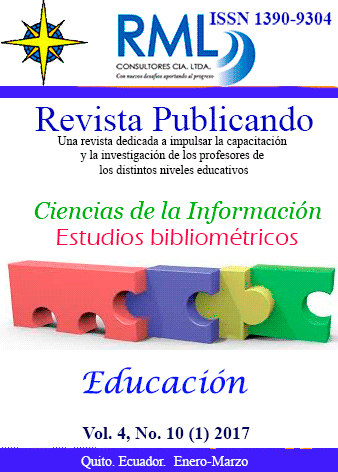Abstract
El artículo tuvo como objetivo explorar las posibilidades de empleo del Matlab en la solución de un problema simple de los que se cubren en un curso básico de Algebra Lineal. El análisis se basó en el desarrollo de un libro en Matlab que permite desarrollar ecuaciones lineales. Para ello emplea el Matlab 2016 versión A. Una revisión bibliográfica previa en ScienceDirect permitió ubicar los artículos claves de acuerdo con el objetivo de la investigación.
Se creó un libro de Matlab para proporcionar soluciones a un sistema de ecuaciones lineales. El libro puede emplearse como una demostración para los estudiantes y con retroalimentación continua lograr la participación activa de los mismos. Las soluciones proporcionadas por los paquetes incorporados en Matlab y Maple no proporcionan los componentes didácticos en términos de explicaciones, errores de mínimos cuadrados y pruebas de la solución. El libro proporciona una manera eficaz de realizar una solución independientemente de si el sistema es consistente o inconsistente con soluciones únicas o generales, invocando automáticamente el enfoque de mínimos cuadrados cuando sea necesario. Por lo tanto, el libro de Matlab es una manera simple, innovadora y novedosa para mejorar la comprensión de todos los aspectos de la solución de un conjunto de ecuaciones lineales a través de una muestra de todos los conceptos relevantes y las relaciones. El aprendizaje asistido por computadora logrado a través del libro de Matlab debería hacer relativamente fácil para los instructores y estudiantes poder ejercitar el desarrollo de algoritmos.
References
Abdulwahed, M., Jaworski, B., & Crawford, A. (2012). Innovative approaches to teaching mathematics in higher education: a review and critique.
Almeida, R. M. P., Antontsev, S. N., & Duque, J. C. M. (2017). Discrete solutions for the porous medium equation with absorption and variable exponents. Mathematics and Computers in Simulation, 137, 109-129. doi:10.1016/j.matcom.2016.12.008
Botana Ferreiro, F. R., Hohenwarter, M., JaniÄić, P., Kovács, Z., Ivan, P., Recio Muñiz, T., & Weitzhofer, S. (2015). Automated theorem proving in GeoGebra: Current achievements.
Caliari, M., Kandolf, P., Ostermann, A., & Rainer, S. (2016). The Leja method revisited: Backward error analysis for the matrix exponential. SIAM Journal on Scientific Computing, 38(3), A1639-A1661. doi:10.1137/15M1027620
Castillo, S. (2008). Propuesta pedagógica basada en el constructivismo para el uso óptimo de las TIC en la enseñanza y el aprendizaje de la matemática. Revista latinoamericana de investigación en matemática educativa, 11(2), 171-194.
Cretchley, P., Harman, C., Ellerton, N., & Fogarty, G. (2000). MATLAB in early undergraduate mathematics: An investigation into the effects of scientific software on learning. Mathematics Education Research Journal, 12(3), 219-233.
Chu, Z., Sun, W., & Wang, J. (2016). Research on MAC layer communication performance model of wireless sensor networks for intelligent transportation.
Fangohr, H. (2004). A comparison of C, MATLAB, and Python as teaching languages in engineering. Computational Science-ICCS 2004, 1210-1217.
Ge, S., Cao, Y., Ding, Z., Liu, K., & Ding, R. (2016). Type synthesis of 3T1R hybrid mechanisms based on fractal theory. Hsi-An Chiao Tung Ta
Hsueh/Journal of Xi'an Jiaotong University, 50(11), 75-82 and 156. doi:10.7652/xjtuxb201611012
Goncalves, B., Hobbi, A., & Golnabi, A. H. (2016). A hands-on application-based tool for STEM students to understand differentiation.
Huatuco, R. M., & Velásquez, W. L. (2014). El uso de las TIC en la enseñanza profesional. Industrial Data, 12(2), 061-067.
Jaramillo, A. (2014). Enseñanza de las matemáticas. Revista de Matemática MATUA, 1(2).
Li, X., & Huang, Z. J. (2017). An inverted classroom approach to educate MATLAB in chemical process control. Education for Chemical Engineers, 19, 1-12. doi:10.1016/j.ece.2016.08.001
Majka, M., Gadda, G., Taibi, A., Gałazka, M., & Zieliński, P. (2017). Earliest effects of sudden occlusions on pressure profiles in selected locations of the human systemic arterial system. Physical Review E - Statistical, Nonlinear, and Soft Matter Physics, 95(3). doi:10.1103/PhysRevE.95.032414
Mandel, R., & Reichel, W. (2017). A priori bounds and global bifurcation results for frequency combs modeled by the Lugiato-Lefever equation. SIAM Journal on Applied Mathematics, 77(1), 315-345. doi:10.1137/16M1066221
Ochkov, V. F., & Bogomolova, E. P. (2015). Teaching Mathematics with Mathematical Software. Journal of Humanistic Mathematics, 5(1), 265-285.
Pichardo, I. M. C., & Puente, í. P. (2012). Innovación Educativa: Uso de las TIC en la enseñanza de la Matemática Básica. EDMETIC, 1(2), 127-144.
Rezvani, A., & Gandomkar, M. (2016). Modeling and control of grid connected intelligent hybrid photovoltaic system using new hybrid fuzzy-neural method. Solar Energy, 127, 1-18. doi:10.1016/j.solener.2016.01.006
Shynk, J. J. (2016). Mathematical Foundations for Linear Circuits and Systems in Engineering: wiley.
Swain, S. D., Ray, P. K., & Mohanty, K. B. (2016). Design of Passive Power Filter for Hybrid Series Active Power Filter using Estimation, Detection and Classification Method. International Journal of Emerging
Electric Power Systems, 17(3), 363-375. doi:10.1515/ijeeps-2015-0190
Yang, H., Li, L., & Gao, Z. (2017). Obstacle avoidance path planning of hybrid harvesting manipulator based on joint configuration space. Nongye Gongcheng Xuebao/Transactions of the Chinese Society of Agricultural Engineering, 33(4), 55-62. doi:10.11975/j.issn.1002-6819.2017.04.008
You are free to:
Share — copy and redistribute the material in any medium or format.
Adapt — remix, transform, and build upon the material.
The licensor cannot revoke these freedoms as long as you follow the license terms.
Under the following terms:
Attribution — You must give appropriate credit, provide a link to the license, and indicate if changes were made. You may do so in any reasonable manner, but not in any way that suggests the licensor endorses you or your use.
NonCommercial — You may not use the material for commercial purposes.
ShareAlike — If you remix, transform, or build upon the material, you must distribute your contributions under the same license as the original.
No additional restrictions — You may not apply legal terms or technological measures that legally restrict others from doing anything the license permits.
